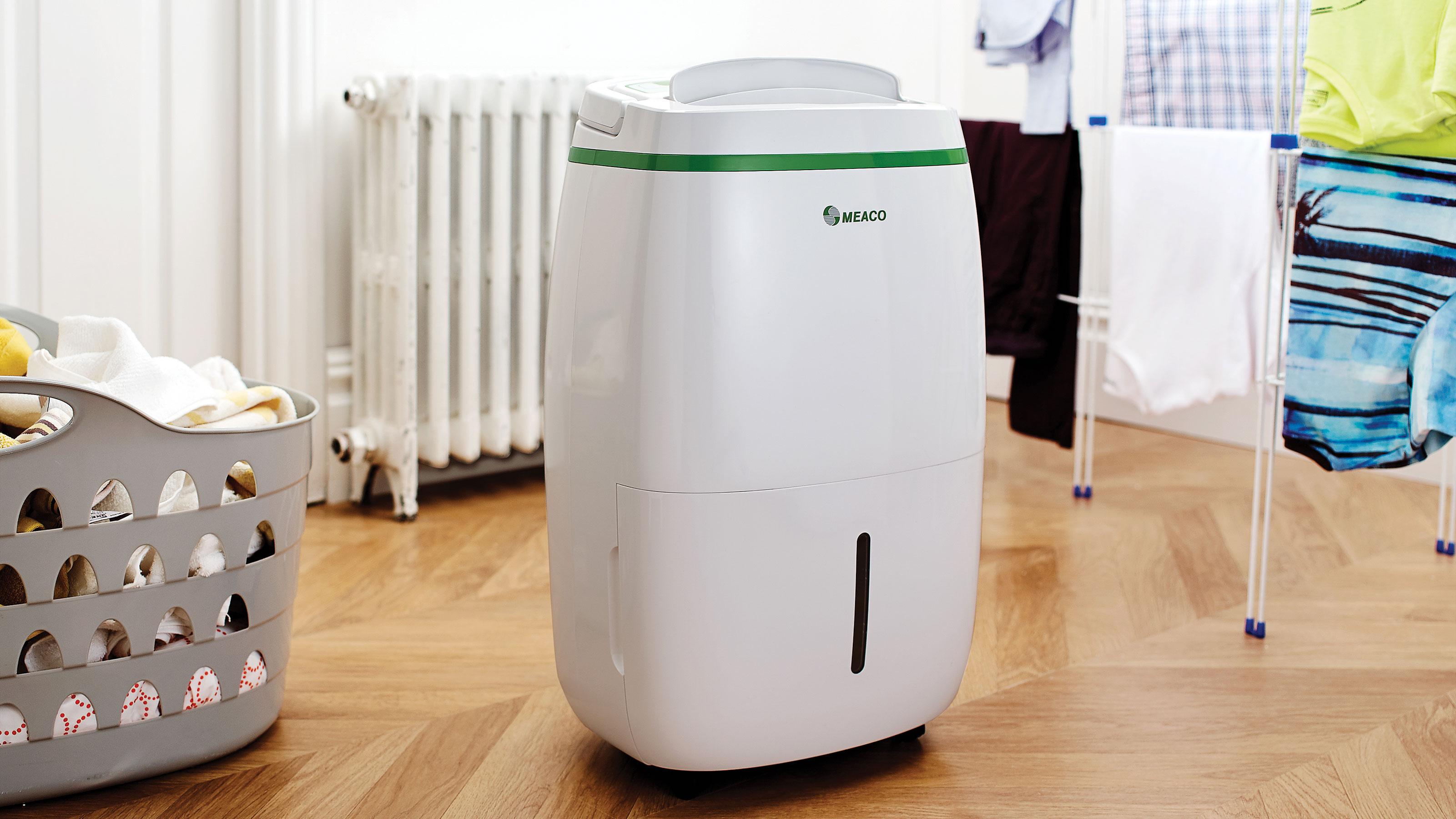Homebuilding Verdict
A highly-effective compressor dehumidifier that is perfect for those living in medium to large homes. While not the cheapest on the market, its low running costs and energy usage more than make up for this.
Pros
- +
Suitable for even fairly large spaces
- +
Free HEPA filter included for air purification
- +
Low energy means lower running costs
- +
Timer function
Cons
- -
A little noisy in small spaces when running on high fan speed
You can trust Homebuilding & Renovating.
- Does the Meaco 20L Low Energy Dehumidifier/Air Purifier work well?
- Setting up the dehumidifier
- How does this dehumidifier work?
- Testing the dehumidifier
- The results
- Running costs
- Do dehumidifiers dry clothes faster?
- How often did the water need emptying?
- What is the HEPA filter for?
- Handy extra features
- Is the dehumidifier noisy?
- Homebuilding's verdict
- About this review
The Meaco 20L Low Energy Dehumidifier/Air Purifier is designed to help control humidity levels in a house, reducing or even eliminating window condensation and, subsequently, minimising the risk of damp.
It also offers further benefits. It can help to dry laundry quicker and, thanks to its HEPA filter, can also purify the air — ideal for those with allergies, but also a great way to create a fresher-feeling indoor air environment in general.
This dehumidifier is perfect for those living in medium to large homes — spaces up to 64m² are well served by this particular model. It can also be used in unheated basements or cellars.
So, just how well does it live up to its claims, is it easy to use and is it worth the initial outlay and running costs further down the line?
Does the Meaco 20L Low Energy Dehumidifier/Air Purifier work well?
Name: 20L Low Energy Dehumidifier/Air Purifier
Type: Compressor
Filter: Washable + HEPA filter
Timer: 1-24hr
Extraction: 20L
Dimensions: 595 x 385 x 290mm (HWD)
Weight: 13.5g
Variable humidistat: Yes, between 3-%/rh and 80%/rh
Louvre: Yes - automatic
Air flow: 160m3/hour
Noise level at one metre: Max. 46dB(A)
Operating temperatures: +5˚C/+35˚C
Fan speeds: 2
Tank: 6L
Having tested the 20L Low Energy Dehumidifier, available to buy on Appliances Direct, over the course of four weeks at the time of writing this review, we can confirm that it has performed brilliantly, both at reducing condensation and also in reducing the drying time of damp laundry.
It was easy to set up and proved excellent at pretty much eliminating the condensation on the windows of the first floor bedrooms in the house we tested it in.
While it is a sizeable piece of kit, being set on castors made it easy to move around and the water tray couldn't have been simpler to remove and empty. While we were mainly focussed on the effect that this dehumidifier would have on the condensation problem the house was suffering from, we were also impressed with the way in which it sped up the time it took to dry wet washing.
While not the cheapest product on the market, this is one high-quality and well-made piece of equipment with a host of useful extra features — plus its low running costs make it far cheaper to use than many of the alternatives out there.
Is the 20L Low Energy Dehumidifier easy to set up?
While this dehumidifier is pretty large, it isn't too heavy and comes in a box with carry handles. Once it is out of the box, it is easy to move around thanks to the castors underneath.
Set up couldn't be simpler. The instruction manual is clear and the controls are simple and, in all honesty, pretty self-explanatory.
Once plugged in, the machine can be switched on, activating the digital display. The target humidity level can then be set — another very simple task. So, what is normal humidity in a house?
“The average humidity inside UK homes should be around the 50-55%rh range and be slightly lower in winter months,” says Chris Michael, MD of Meaco. “Maintaining a humidity target of 40% in the winter will keep condensation from forming on your windows.”
With that in mind, by using the up and down arrows, we set the target at 55. We also selected the 'CO' mode. On this mode, the dehumidifier runs continuously. You could also choose to select 'AP' mode, although this just purifies the air as opposed to collecting any water.
We were testing this dehumidifier in an old house that was prone to condensation and when the machine first started running, the relatively humidity showed as being 80%.
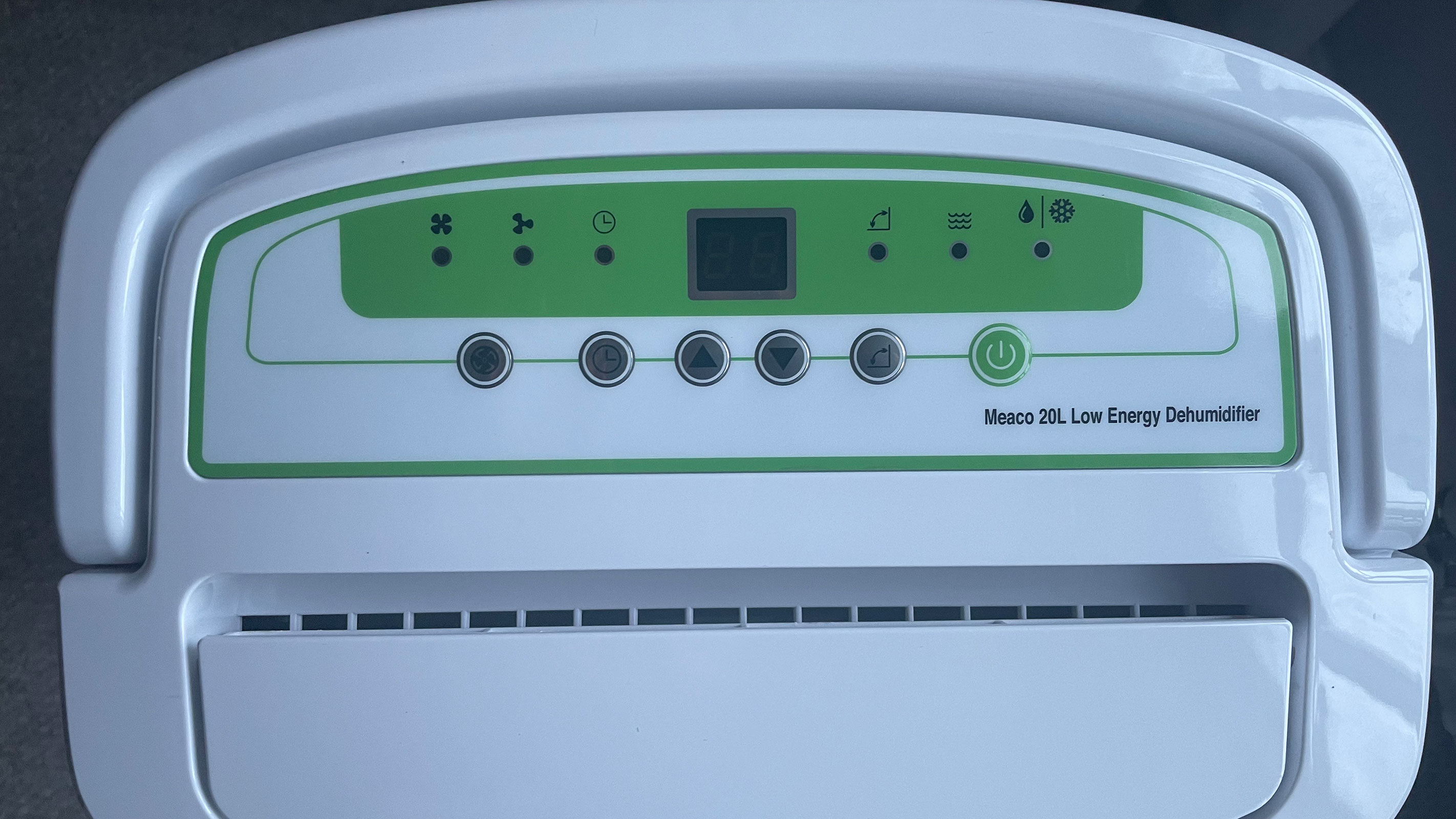
How does the Meaco 20L Low Energy Dehumidifier work?
How do dehumidifiers work? At a very basic level, they remove excess moisture from the air — something that helps reduce condensation and, in turn, damp. They can also help to dry wet laundry faster.
"A dehumidifier removes moisture from the air — excess moisture that you do not want to condense and hang around your home," says Chris Michael. "It helps to ease damp problems, gives you healthier air to breath and can even make your energy use more efficient.
"There are two main types of dehumidifier — the desiccant dehumidifier and the compressor dehumidifier," explains Chris. The Meaco Low Energy Dehumidifier we are testing is a compressor model.
Compressor dehumidifiers are best for anyone aiming to prevent damp and help clothes dry quicker. They are ideal for use in areas with temperatures above 15˚C and they are cheaper to run than desiccant.
"They have two sets of coils, the first cools to create the condensation, which is collected into the water tank, the second warms the dry air back to just above room temperature," says Chris. "This helps to create the dry air needed to combat condensation, mould and damp problems."
How did we test the dehumidifier?
As mentioned previously, testing of this dehumidifier was carried out in a house that was suffering from window condensation and, as a result, signs of damp. The dehumidifier was initially placed in the room that the problem was worst — the master bedroom.
The fan was set at high speed with a the target humidity of 55%rh and was left to run for around six hours, before being switched off overnight.
Meaco suggest placing the dehumidifier was placed in a central position such as the landing or hallway, so the following day the machine was moved to the landing of the house where it was left to run for six hours once again.
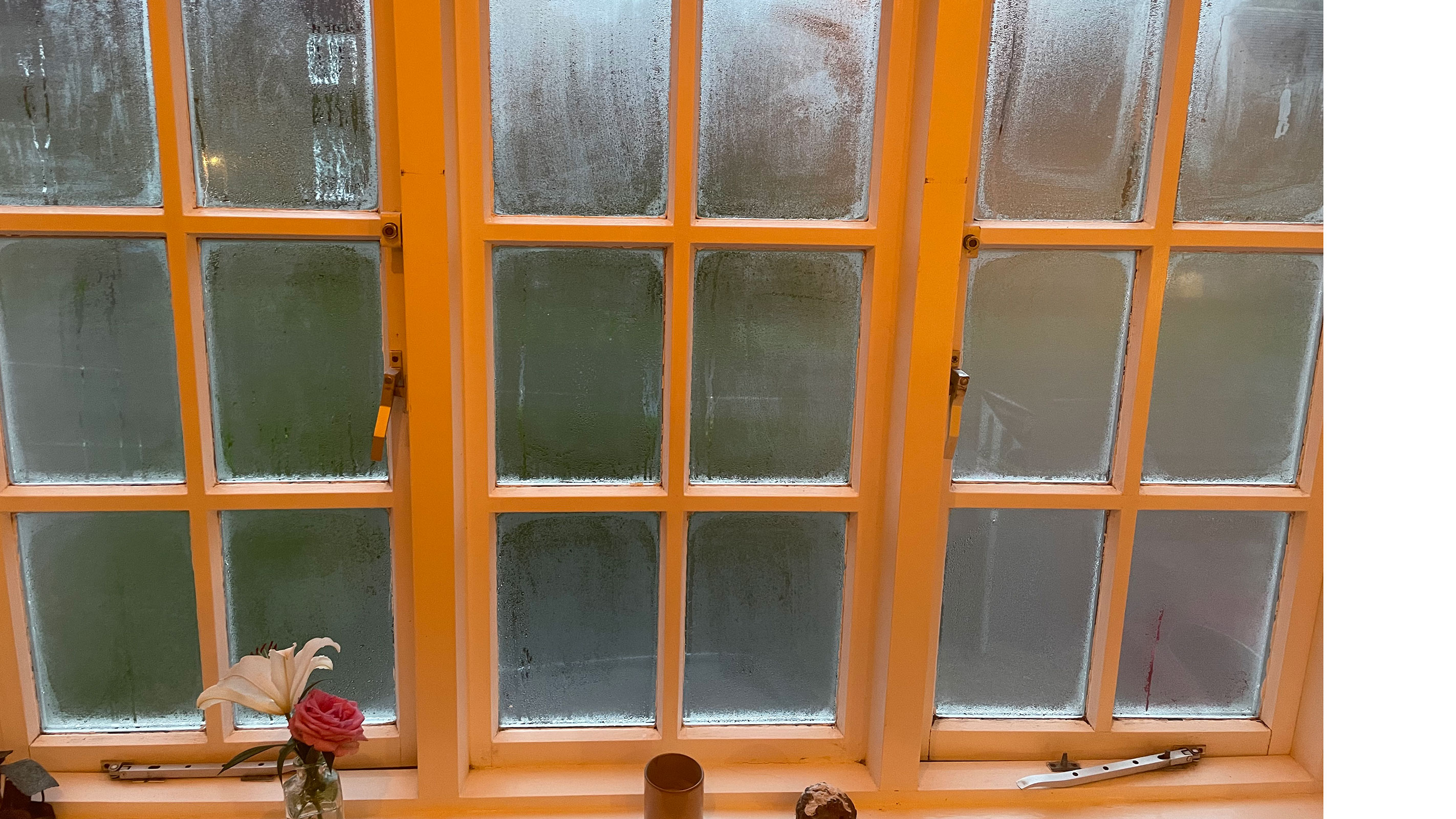
Did the dehumidifier solve the condensation?
Results time. Did the dehumidifier clear up the condensation problem? In a word — yes. When placed in both the bedroom and the landing and have been running for between 6-8 hours during the day, there was no window condensation the following mornings.
Despite being on the landing for some of the testing and all bedroom doors being shut overnight, it still worked to reduce the moisture in the air to such a degree that the bedroom windows remained condensation free and were clear in the morning.
The next day we kept the dehumidifier off all day. The result of this? The condensation was back the following morning .
How much does the Meaco 20L Low Energy Dehumidifier cost to run?
One of the main concerns of many people is dehumidifier running costs.
When calculating dehumidifier running costs, you need to take the model's power rating and find out how much you pay for electricity per kWh. The new Energy Price Cap rates from 1 October to 31 December 2023 stand at 27.35p per kWh.
Dehumidifiers are rated in Watts (W) — this is the amount of power they use.
Our model has a power consumption of 219 watts at 20°C and 60% relative humidity.
To establish how much it would cost to run, we used the following calculation:
0.219kWh x 27.35p = 6p per hour. We have been running the dehumidifier for between 8-10 hours per day, meaning we are spending roughly 48-60p per day.
Does the dehumidifier dry clothes faster?
To test this we placed the dehumidifier in a room with a clothes horse-full of damp washing — around a metre or so away. Meaco suggest that to dry laundry quickly, the dehumidifier should be placed in as small a room as possible with the doors and windows closed.
We selected the louvre swing button mode to set the louvre in motion, distributing the air around. Meaco recommend using the louvre to direct the airflow towards laundry. The air coming out in this mode is a little warm.
With the dehumidifier running, the washing took roughly five hours to dry — a good four to five hours less than without.
How often did the water need emptying?
When the water tank is full, the dehumidifier lets out a series of beeps and then switches itself off. There is also a series of three wavy lines that lights up on the digital display to indicate the tank is at its limit. At this stage, you simply pull out the water tank at the front of the unit and empty it out — you can use it to water your plants if you like.
There is a carry handle on top of the water tank which make it easy to transport and tip out.
This model has a tank with a capacity of 6L. Running on full speed for six hours, my dehumidifier collected 2.17 litres.
What is the HEPA filter for?
This dehumidifier comes complete with a HEPA filter, in addition to the regular filter that it was fitted with.
HEPA stands for High Efficiency Particulate Air. A HEPA air filter is made up of thousands of very fine fibres compressed into a mat which can grab both microscopic particles as well as bigger ones. The HEPA filter that comes with the Meaco dehumidifier I am using can capture up to 99.97% of particles that are 0.3μm or more. It is really simple to pop the HEPA filter in and, once in place, all the air going through the dehumidifier is purified — great for anyone who might be allergic (or would just prefer to avoid) mould spores, pollen, dust, pet dander or dust mites.
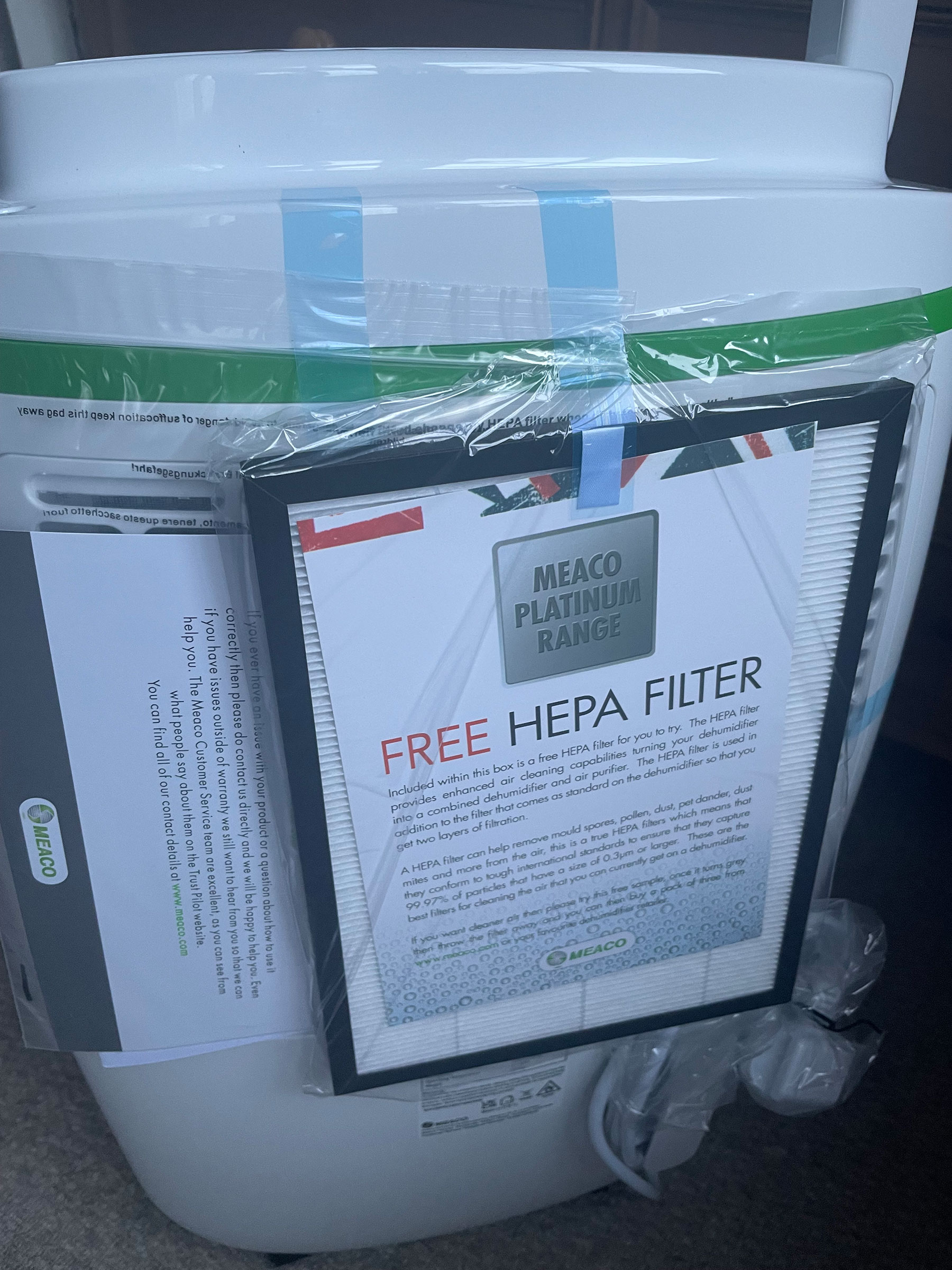
What extra features does the dehumidifier have?
Aside from those already noted, this dehumidifier comes with several other useful functions that are worth noting. These include:
- Memory function/Auto re-start: This one was very useful. It means that even when you turn the machine off, when you switch it back on it will continue to run in the same settings you previously had it running on meaning you don't need to reset the whole thing.
- Meaco Control Logic: This useful features means that when the relative humidity in your room is at more than 3%rh below your target, the dehumidifier will stop drying the air. If the relative humidity is then stable, the dehumidifier will go to sleep for 30 minutes. After this time, it wakes up, samples the air and if it senses the air is now more than 3%rh above your set point, it will start to dehumidify again. If all is well however, it will go to sleep for another 30 minutes. Great for saving energy.
- Child lock: This would be really useful for those with little ones who might be tempted by flashing lights and an array of buttons. With the child lock activated the functions of the dehumidifier cannot be changed.
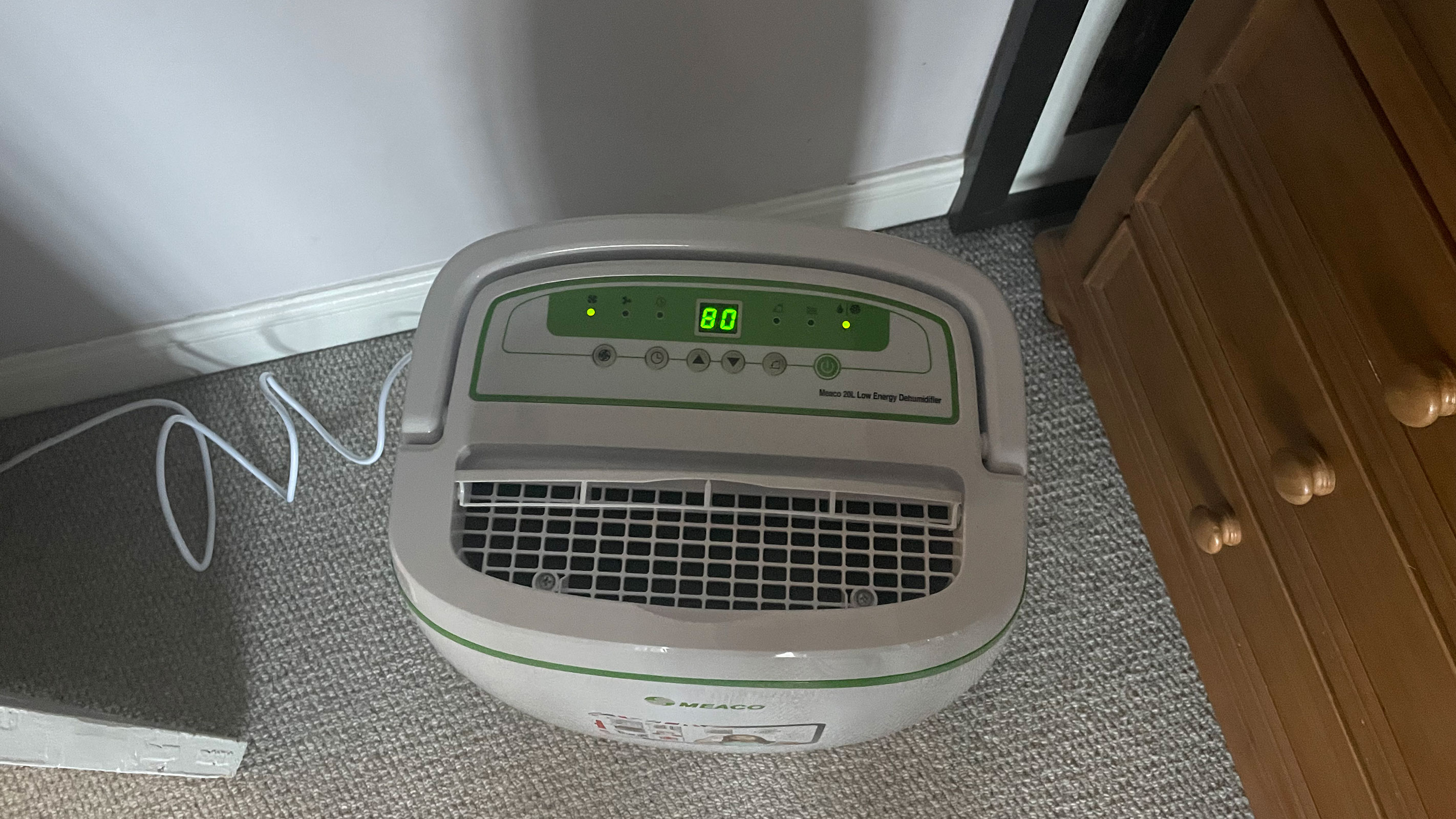
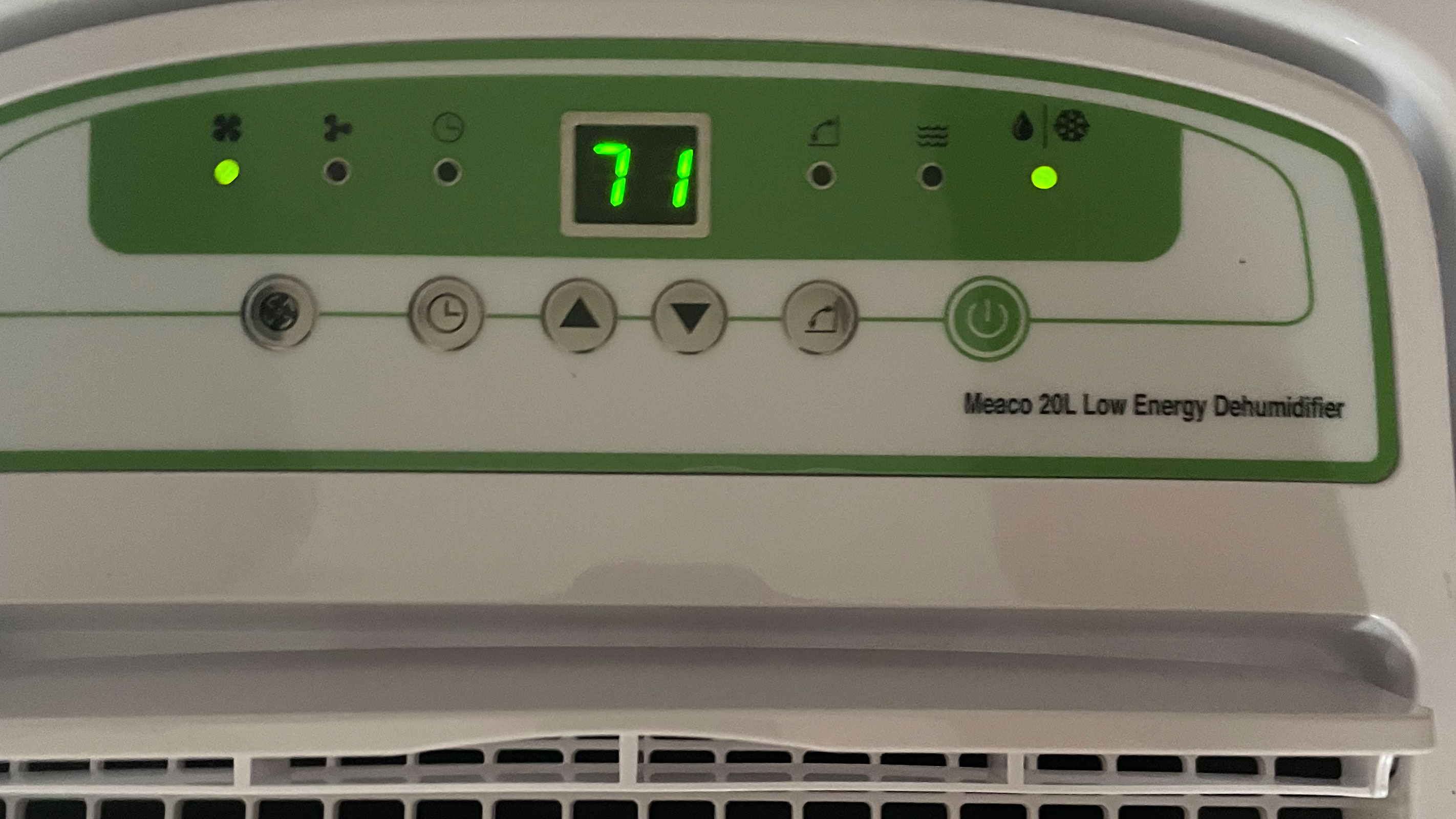
Is the dehumidifier noisy?
According to the manufacturer's specifications, this dehumidifier has a noise level at one metre of a maximum of 46dB(A) — but what is that like to live with?
During the day, being located upstairs, the noise was barely noticeable. At nighttime, when all was quiet, the low humming could obviously be heard. However, it wasn't overbearing and as we found there was no need to run the dehumidifier overnight to achieve the desired results this proved not to be an issue.
Do we recommend the Meaco 20L Low Energy Dehumidifier?
The Meaco 20L Low Energy Dehumidifier and Air Purifier costs approx. £259.99. They also do a smaller model, the Meaco 12L Low Energy Dehumidifier and Air Purifier, which costs £189.99 and is more suitable for small homes and flats.
While it is definitely not the cheapest model on the market, you need to factor in the fact that this is a low energy dehumidifier, making it cheaper to run than many of these lower cost products. For example, we also recently carried out a ProBreeze 20L Premium Dehumidifier Review. While this model only costs £199, the website states it has running costs of 14p/hour — more than double our model.
To find out more about dehumidifiers and which ones we rate, read our best dehumidifier buying guide.
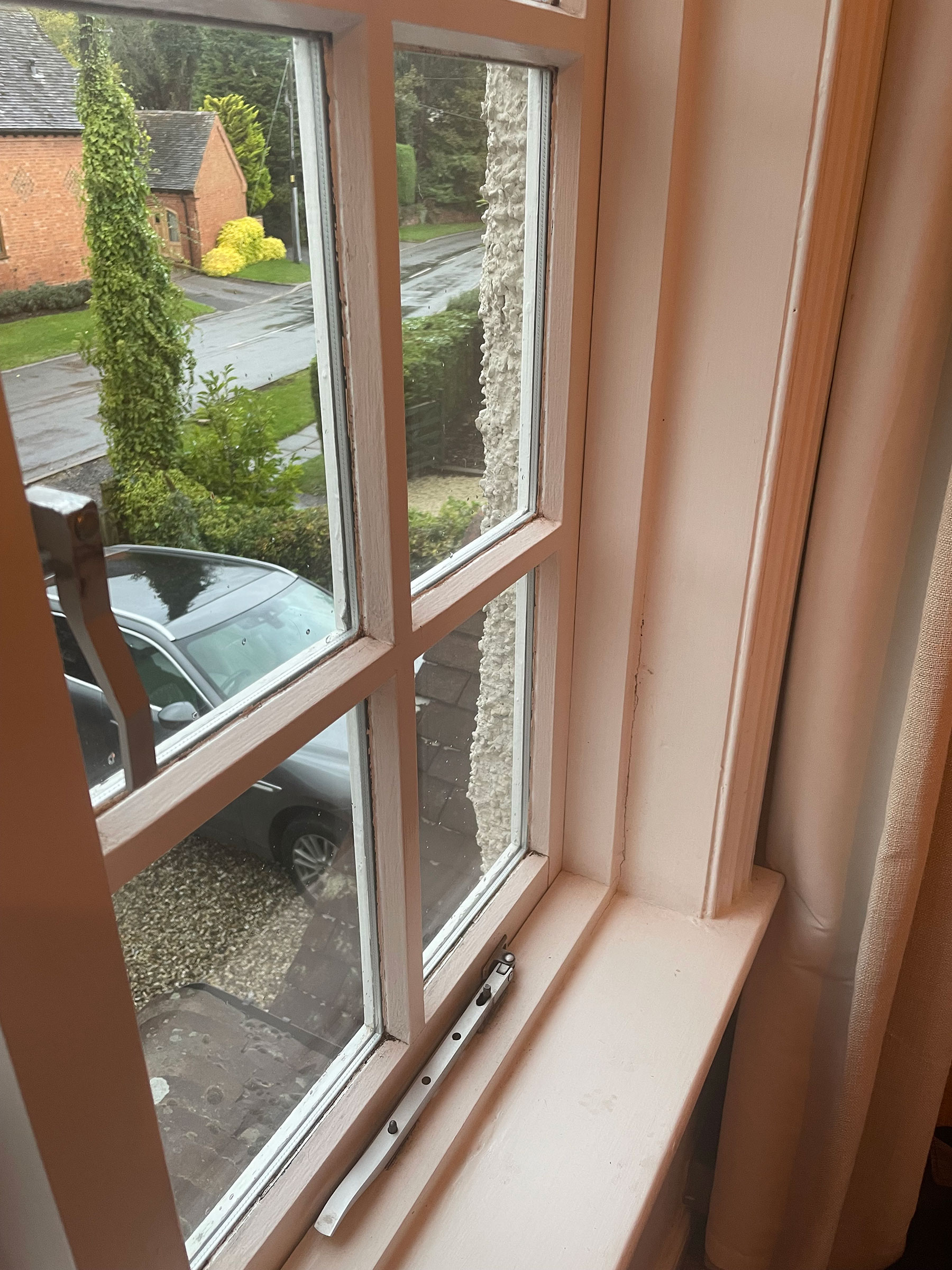
About this review
Homebuilding & Renovating is not given any compensation by Meaco for our reviews, but may be allowed to keep the product for long-term testing meaning we can test it over a greater length of time, and update this review if required.
Natasha was Homebuilding & Renovating’s Associate Content Editor and was a member of the Homebuilding team for over two decades. In her role on Homebuilding & Renovating she imparted her knowledge on a wide range of renovation topics, from window condensation to renovating bathrooms, to removing walls and adding an extension. She continues to write for Homebuilding on these topics, and more. An experienced journalist and renovation expert, she also writes for a number of other homes titles, including Homes & Gardens and Ideal Homes. Over the years Natasha has renovated and carried out a side extension to a Victorian terrace. She is currently living in the rural Edwardian cottage she renovated and extended on a largely DIY basis, living on site for the duration of the project.
